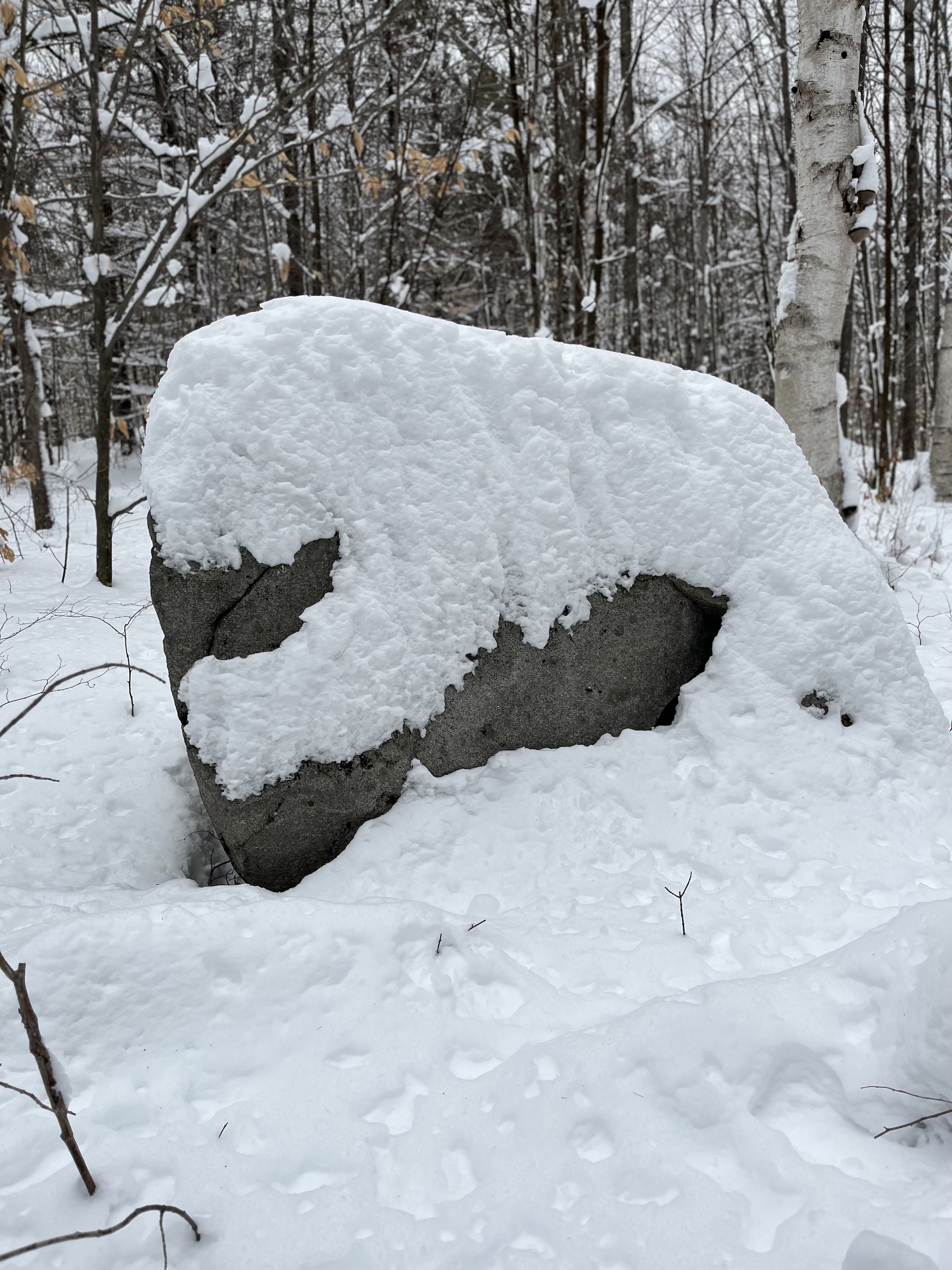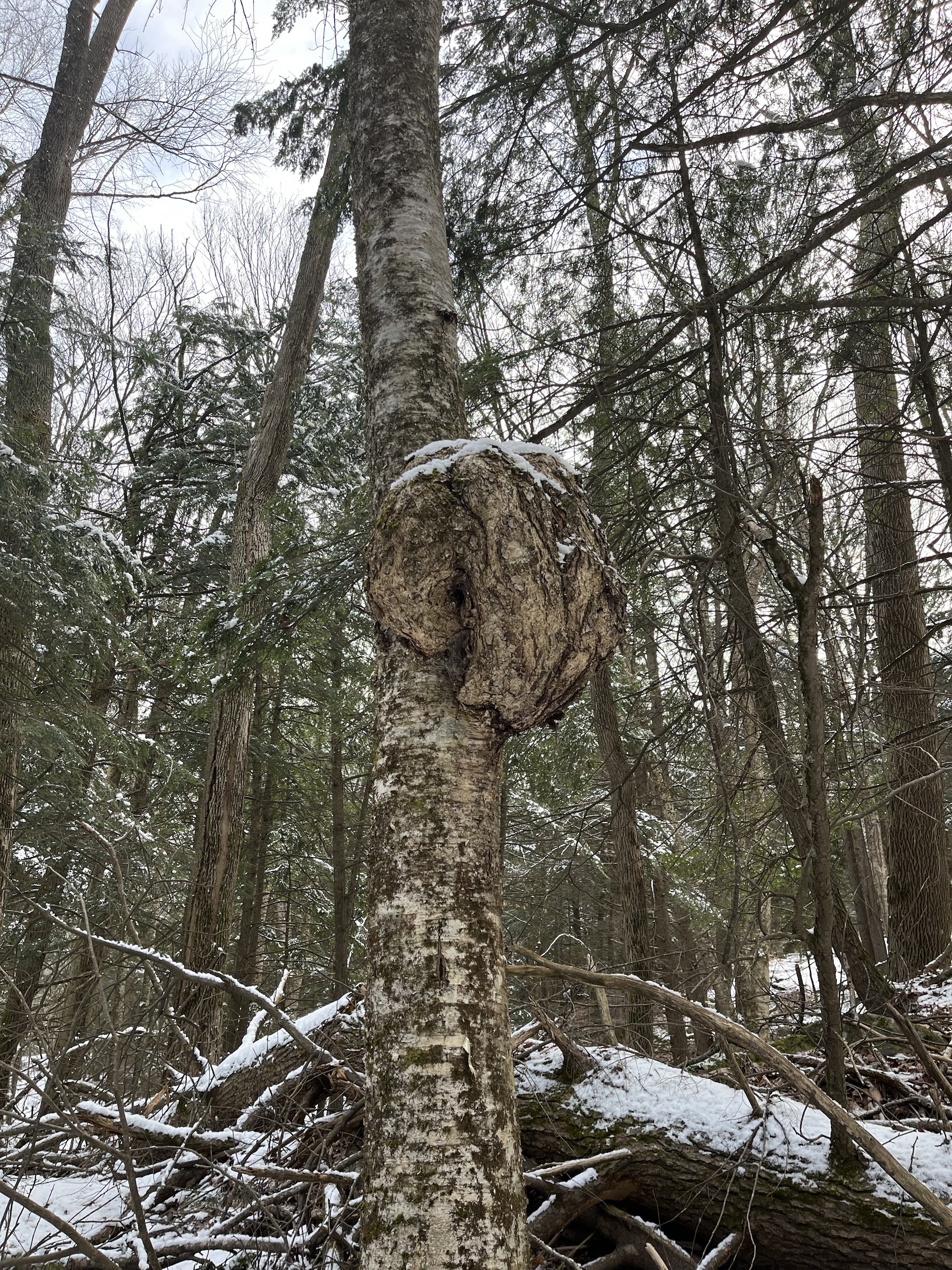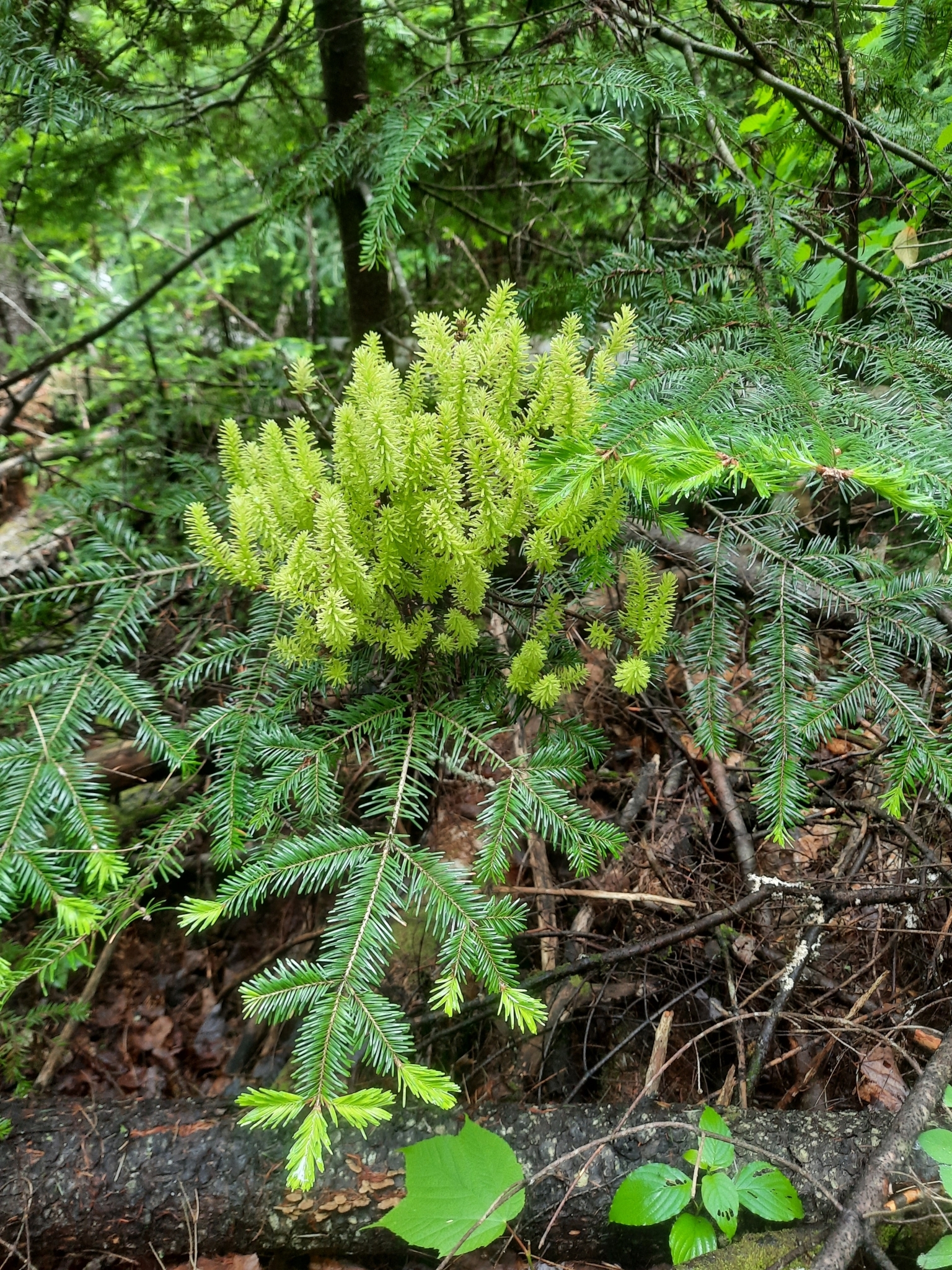To Know Is to See
Published Mar 1st, 2023 by Lynnwood Andrews
Learning about unfamiliar natural features can help inform your experience while walking on Norwich’s trails. Here are four natural phenomena to explore: (As you begin to notice them, you might start seeing them everywhere, which is the result of a human feature or cognitive bias known as the “frequency illusion.”)
Holloway
 A holloway at the start of the Bradley Hills trail. Photo credit Lynnwood Andrews.
A holloway at the start of the Bradley Hills trail. Photo credit Lynnwood Andrews.
A holloway is a sunken lane, or part of a trail, where the land on either side lies significantly higher than the roadbed. The sunken roadbed could have been created through erosion, land subsidence, soil compaction, or the ancient digging of embankments to herd livestock or mark boundaries. Holloways are known throughout Europe and the Middle East, many on roads or trails dating back to Roman and Iron Age times. A well-known holloway in the US exists on the Oregon Trail. Trail ruts created a holloway in the sandstone hills near Guernsey, Wyoming between 1841-1869.
A beautiful book about holloways in England is Holloway, by Robert Mcfarlane, Dan Richards and Stanley Donwood. Faber & Faber, London: 2014.
Glacial Erratic
 A glacial erratic on the Bill Ballard Trail. Photo credit Lynnwood Andrews.
A glacial erratic on the Bill Ballard Trail. Photo credit Lynnwood Andrews.
A glacial erratic is a rock that was deposited by a glacier that is different from the type of rock upon which it sits. They can vary in size from grains of glacial silt to giant boulders such as the Green Mountain Giant in Whitingham, VT. Erratics traveled over geologic time across great distances, by two means – glacier-borne or ice-rafted. Glacier-borne erratics result from either ice erosion underneath the glacier, or avalanches depositing rocks onto the glacier surface. Ice-rafted erratics travel in icebergs spawned at the edges of rock and debris-filled glaciers.
A wonderful guide to New England’s glacial erratics is Erratic Wandering; An Explorers Guide to Astonishing Boulders of Maine, New Hampshire and Vermont by Jan & Christy Butler.
Marcescence
 Marcescent leaves on an oak tree at Huntley Meadow. Photo credit Lynnwood Andrews.
Marcescent leaves on an oak tree at Huntley Meadow. Photo credit Lynnwood Andrews.
When plants hang onto their withered parts through the winter, that is called marcescence, from the Latin marcescere, meaning “to fade.” In New England, dead leaves persist primarily on oak, beech, and hornbeam, and witchhazel. The evolutionary reason for marcescence is not known. It may reduce herbivory on buds and twigs as the dead leaves are not palatable, and are noisy if browsed. It may enhance plant nutrition and moisture retention. Dropping leaves in spring instead of fall may provide a sort of mulch or compost that not only gives a nutritional boost, but also preserves soil moisture. Photodegradation over the winter on marcescent leaves may help in the decomposition of tough oak and beech leaves.
Burl
 A burl on a yellow birch. Photo credit Lynnwood Andrews.
A burl on a yellow birch. Photo credit Lynnwood Andrews.
Viruses, bacteria, fungi and insects cause some trees to create burls, large gnarly bulges on tree trunks; however, most occur on roots underground. These tumor-like protuberances result from hyper growth of xylem, though botanists do not fully understand the mechanism. Crown gall bacterium, for example, can cause burl formation, but attempts to infect trees with it to create burls have been unsuccessful. The irregular growths produce unusual wood grain that is prized by woodworkers. For the most part, burls do not appear to damage the tree. Indeed, trying to cut off a burl causes such injury that trees die.
Witches’ Broom

Another deformation in trees and shrubs caused by infections and genetic factors is witches’ broom, a dense ball of weak and dwarfed shoots. They occur in a wide variety of trees and shrubs including Amelanchier, Cherry, Elm, Alder, Fir, Cedar, Spruce, Juniper, Oak, Rhododendron, and roses. The horticultural industry has successfully grown new dwarf cultivars, especially of conifers, from grafted cuttings. Witches’ brooms also serve an ecological function providing nest sites for numerous bird species and northern flying squirrels.
Originally published in Winter/Spring 2023 Norwich Times